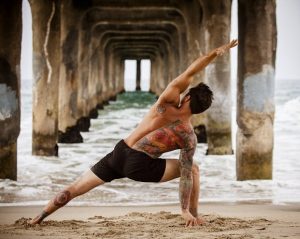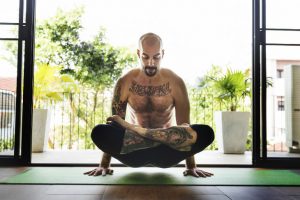Yoga is a very ancient practice for finding wholeness in practice and in life.
Yoga consists of asanas (exercises), breathing techniques and meditations (passive and active), therefore it develops a person comprehensively – through the body, mind and emotions. Although yoga is originally a spiritual practice, in large cities spirituality takes up a small part of it. Many techniques are adapted to the tasks of the students, and the emphasis is on working with the body and breathing.
Yoga helps:
- Improve concentration, develop stress resistance and skills to slow down the rhythm of life;
- Restore the emotional background, calm the psyche;
- “Renew” the body and regulate the hormonal background;
- Improve the quality of sleep;
- Strengthen physical health (strength, flexibility, balance).

Today, there are many schools, teachers and styles of yoga around the world. Some adhere to traditional teachings, while others combine new and ancient techniques, so everyone can find something different in yoga. Yoga is suitable for everyone – regardless of age, gender, religion and physical fitness. At the same time, yoga is not a sport or fitness in the usual sense. There is no need to set goals and there is no competition: this is a personal practice, even if it takes place in a group.
The frantic rhythm of life, multitasking, excess information – all this contributes to self-destruction, stress, tension, blocks and clamps in the body. We don’t move much, sleep poorly, eat on the go, don’t know how to relax. Yoga is a tool for self-recovery at all levels, for self-regulation and self-discipline.
Yoga for beginners: instructions
Practice should fit into your life. To do this, you need to decide on a few things.
1. Your task is to describe the image of the result
Yoga is a deep and deep practice. Your experience will depend on your requests and expectations. In order not to be disappointed, you must immediately understand what you want and what tasks you are currently solving.
For example, if you want to add movement to your life, cheer up, tighten your body and fit into last year’s jeans, you should not go to classes with an esoteric bias, where everyone communicates in Sanskrit, sings mantras and whirls in ecstasy to connect with their “true” nature.
Decide what you want: move? To relax? Recover? Correct your posture? Learn meditation techniques? Replenish energy reserve? Prepare the body for pregnancy? Know yourself? To develop new, more stable qualities in yourself? Remove a couple of kilograms or remove the clamps in the body? Find strength and energy to change something in yourself? Mindfulness before starting classes will help achieve the desired result.
2. Direction – choose a practice
What suits you better in terms of temperament: static (Hatha yoga) or dynamic (Vinyasa yoga)? What is closer in spirit to you: esotericism (Kundalini yoga), ancient traditions (Ashtanga-vinyasa yoga), modern young trends (INNER YOGA), fitness yoga (Bikram yoga)?
What is the priority at this stage: start strengthening the body and mind (Hatha yoga, Ashtanga yoga, Vinyasa yoga), therapeutic aspect (Yoga therapy), specialized classes (classes for pregnant women, yoga for children, yoga for women), personal development (psychological yoga – PSY-method), active meditations (OSHO practices), doing “right” (Iyengar Yoga)?
3. Location – choose a place
Choose a studio close to work, home, or where you frequent. Practice should fit into your rhythm of life, and not change it. Rate the studio by distance, how to get to it, modes of transport, aesthetics, comfort and atmosphere.
4. Prices – choose a category
You should not go for promotions and start where it will be too expensive for you to continue classes. A one-time action to get acquainted with the practice is the maximum. In classes, regularity is important – you can choose a studio or club in the right price category.
5. Time – choose a schedule
Any fitness club or yoga studio has a schedule of classes: by yoga styles, difficulty levels, experience or specifics of the teacher, sometimes by price. Rely on what is convenient for you – if you like to study in the morning and your schedule allows it, look for a studio with morning practices. You can study both in the evening and on weekends – the main thing is to understand when it will be comfortable for you to go to class.
Ignore the general recommendations (“yoga is better to practice in the morning, in the evening the groups are crowded, the muscles of the body respond better when they have already warmed up more, there are discounts in the daytime”) and listen to yourself: do not rush to a workout that is not fits into your schedule – it will only increase the discomfort.
Starting something new is stressful. Therefore, an important yoga rule: do not fuss, do not strive for the ideal and do not postpone the first class until tomorrow – if you spend time and resources on preparation, you can lose motivation. There is no “right time”, “best form”, “best teacher” and “optimal training” – these are just attempts to escape from difficulties.
